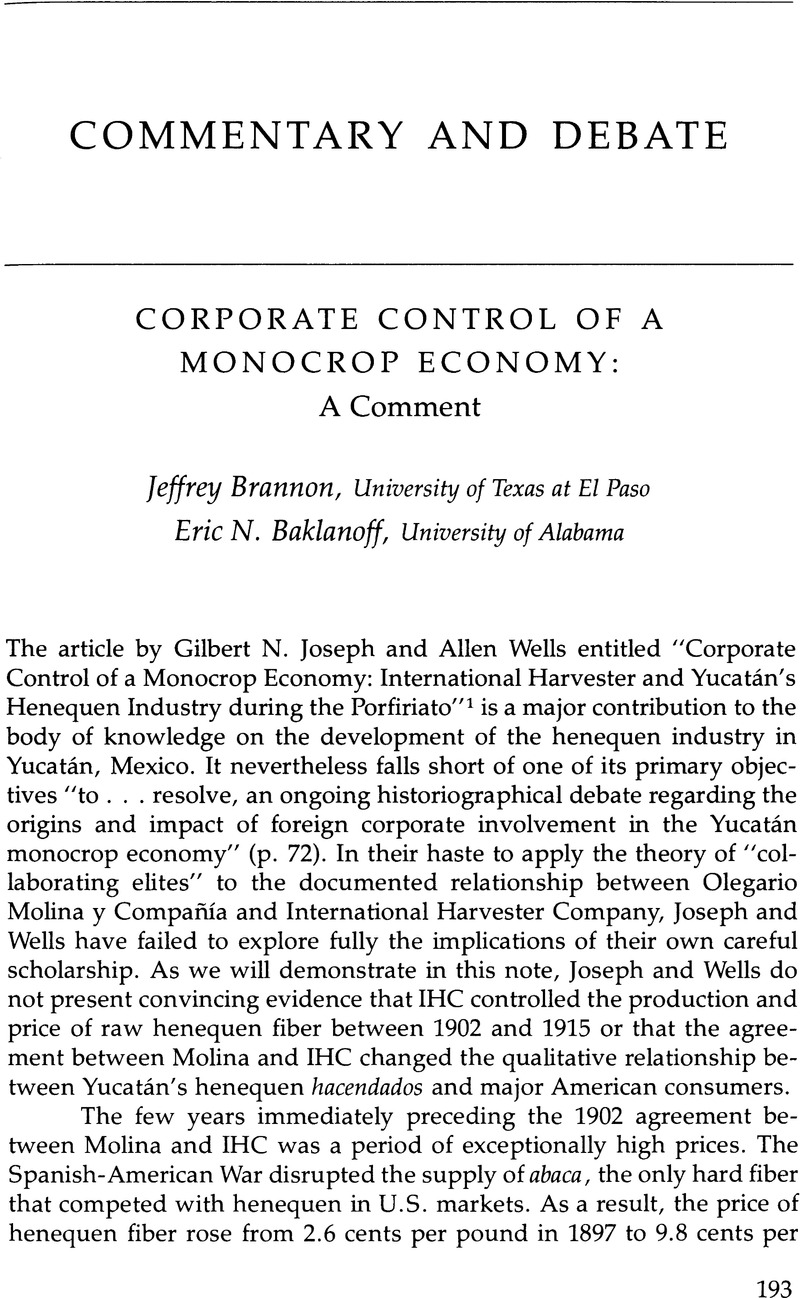Article contents
Corporate Control of a Monocrop Economy: A Comment
Published online by Cambridge University Press: 24 October 2022
Abstract

- Type
- Commentary and Debate
- Information
- Copyright
- Copyright © 1983 by the University of Texas Press
References
Notes
1. Gilbert N. Joseph and Allen Wells, “Corporate Control of a Monocrop Economy: International Harvester and Yucatán's Henequen Industry during the Porfiriato,” Latin American Research Review 17 (January 1982):69-99.
2. Enrique Aznar Mendoza, “La industria henequenera desde 1919 hasta nuestros días,” Enciclopedia Yucatanese, Vol. 3, ed. Carlos A. Echanove Trujillo (Mexico, D.E: Edición Oficial, 1946), pp. 657-725.
3. See Jeffrey Brannon, “The Impact of Government Induced Changes in Production Organization and Incentive Structures on the Economic Performance of the Henequen Industry of Yucatán, Mexico, 1934-1978,” Ph.D. Diss., University of Alabama, 1980, p. 76.
4. Between 1910 and 1916, raw fiber production increased from 94.8 thousand metric tons to 202 thousand metric tons. Agencia General en Mérida, Yucatán, Henequen 1901 a 1973 (Mérida: SAG, 1974).
5. Aznar Mendoza, “La industria henequenera.”
6. Joseph and Wells, “Corporate Control,” p. 88.
7. Brannon, “The Impact of Government,” p. 51.
8. El Colegio de México, Fuerza de trabajo y actividad económica por sectores, pp. 45-60, cited in Laura Randall, A Comparative Economic History of Latin America 1500-1914, Vol. I, Mexico (Ann Arbor, Mich.: University Microfilms Int., 1977), p. 251, Tables 5-15.
- 14
- Cited by


